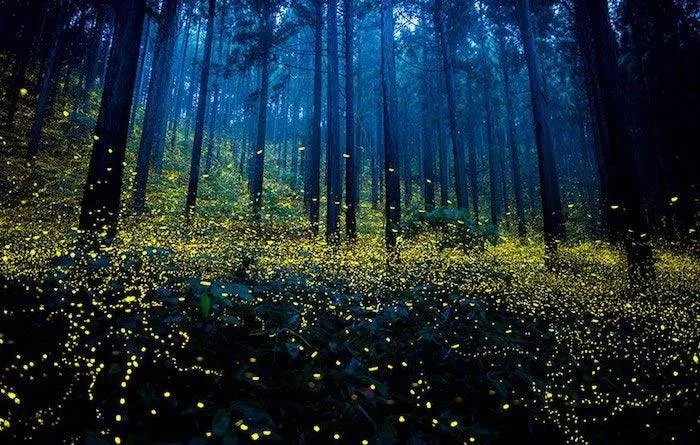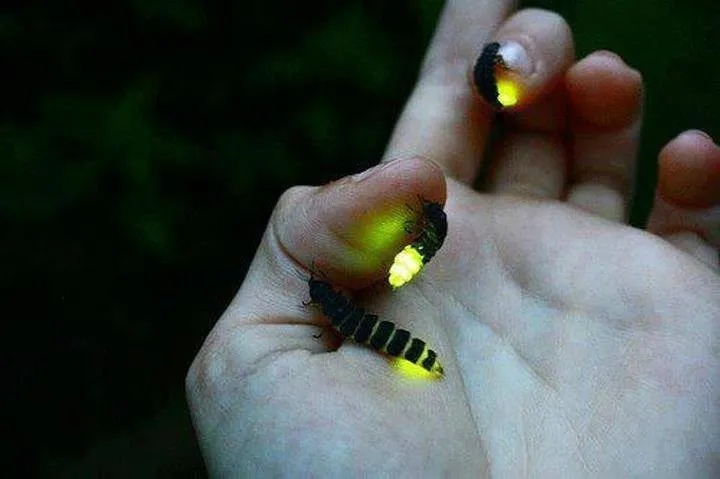The firefly and its cold light

One thing that has always intrigued and amazed me is the firefly and the fact that it is bright. So I dug a little bit about it and that's what I learned.
The firefly emits cold light thanks to its luminescent property. Luminescence allows certain substances to restore in the form of energy photons (of non-thermal origin) a portion of the energy absorbed during excitation due to various needs to create light.
It is a chemical reaction, produced in a specific organ located at the end of the abdomen of these beetles, which is at the origin of the beautiful light emitted by these insects.
This "bioluminescence", common to other animals such as the jellyfish Aequorea victoria, was elucidated in the nineteenth century by the French pharmacist Raphael Dubois. Bioluminescence is due to a reaction between two molecules, luciferin (a protein) and luciferase (an enzyme), carried out in the presence of oxygen. It gives rise to the emission of elementary particles of light, photons.

Except for a few rare species that do not "light up", the 2,000 species of fireflies blink. This behavior signals the animal to the eyes of possible predators who might be wary because they would see in this light emission a risk of toxicity.
Natural selection has retained this luminous behavior because it allows these insects to signal their presence to their sexual partners, to attract prey or to illuminate a flying site. Generally, males use the light in flight to display their presence and females use it to signal their position in the grass.
To avoid any "flirtation" with another species, each one flashes at a particular pace and intensity. For example, the male of Photinus macdermotti emits two flashes separated by two seconds, as for the female, it waits about a second before responding with a single flash (it is a kind of Morse code for fireflies).

The color of the light signal of fireflies also varies according to the species: it can be yellow, green or blue. To increase their chances of encounters between partners, the males of some species blink in groups, which allows the females to detect them, even in the presence of a very large number of males of other species.
Species that do not light up use pheromones instead of light.
The light emitted by these fireflies is superior to fluorescent and incandescent lamps designed by man. Indeed, an incandescent bulb only returns 10% of its energy in the form of light; the rest is wasted and dispersed in heat. A fluorescent bulb is much more powerful; it emits 90% of its energy in the form of light. But neither can compete with the firefly. This produces a light almost devoid of ultraviolet or infrared rays, this insect reaches a yield close to 100%.
